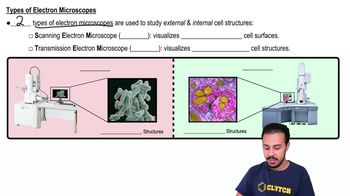Identify the structures in the following figure.
<IMAGE>
a. ___
b. ___
c. ___
d. ___
e. ___
f. ___
g. ___
h. ___
 Verified step by step guidance
Verified step by step guidance Verified video answer for a similar problem:
Verified video answer for a similar problem:



 7:12m
7:12mMaster Organization of Muscle Tissue with a bite sized video explanation from Bruce Bryan
Start learning